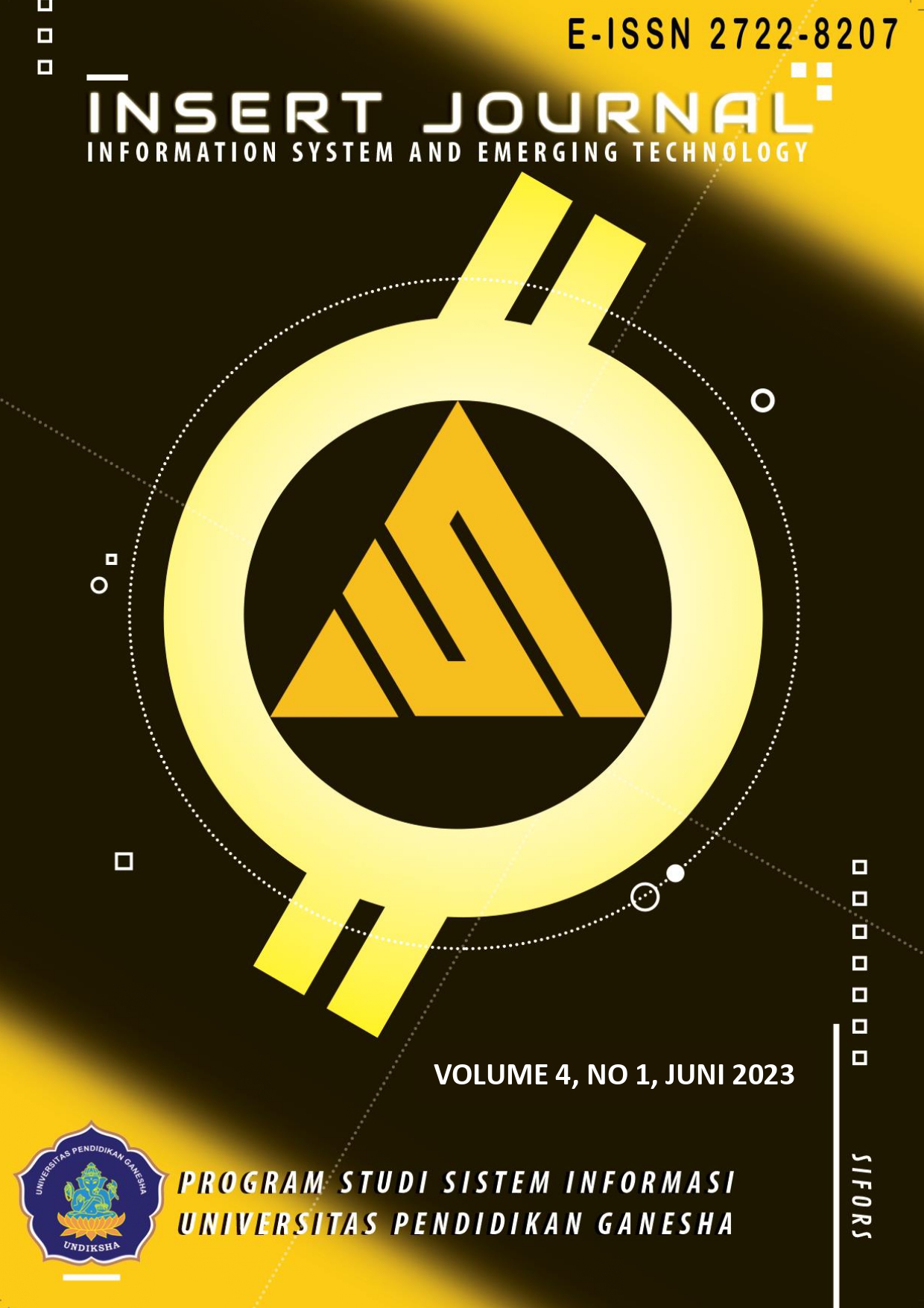Pendekatan Berbasis U-Net untuk Segmentasi Hard Exudate dalam Citra Fundus Retina
DOI:
https://doi.org/10.23887/insert.v4i1.59034Keywords:
Diabetic Retinopathy, Hard Exudate, Segmentation, U-NetAbstract
World Health Organization estimates that globally, 422 million adults over the age of 18 lived with diabetes in 2014. It is also supported by the World Diabetes Foundation estimates that more than 439 million people will be threatened with diabetes by 2030. One of the diseases caused by diabetes is diabetic retinopathy which can cause impaired vision to blindness. Damage to blood vessels and damage to the nerve fibers of the eye are called exudates, which are blood spots containing yellowish-colored fats that have an erratic shape. The types of exudates are divided into two, namely hard exudate and soft exudate. Soft exudate is also known as cotton wool spots and appears with a whitish color with less pronounced edges. While hard exudate occurs due to leakage of proteins and lipid vessels of the retina. The shape appears sharp and bright. To find out where the hard exudate is located in the retinal fundus image, experts or doctors are still looking manually, so it takes a long time to find out location of the hard exudate. Therefore, this research work, contributes to segmenting hard exudate using deep learning, which the method is U-Net. The final result of hard exudates segmentation using U-Net methods is validated with ground truth images by measuring accuracy, sensitivity, and specificity metric score. The results of hard exudate segmentation show for the U-Net metric score is 0.993, 0.454, and 0.997 respectively.
References
Joshua, A. O., Nelwamondo, F. V., & Mabuza-Hocquet, G. (2020). Blood Vessel Segmentation from Fundus Images Using Modified U-net Convolutional Neural Network. Journal of Image and Graphics, 8(1), 21–25. https://doi.org/10.18178/joig.8.1.21-25
Long, S., Huang, X., Chen, Z., Pardhan, S., Zheng, D., & Scalzo, F. (2019). Automatic detection of hard exudates in color retinal images using dynamic threshold and SVM classification: Algorithm development and evaluation. BioMed Research International, 2019. https://doi.org/10.1155/2019/3926930
Mane, V. M., & Jadhav, D. V. (2014). Progress towards automated early stage detection of diabetic retinopathy: Image analysis systems and potential. Journal of Medical and Biological Engineering, 34(6), 520–527. https://doi.org/10.5405/jmbe.2060
Nugroho, H. A., Oktoeberza, K. Z. W., Adji, T. B., & Sasongko, M. B. (2015). Segmentation of exudates based on high pass filtering in retinal fundus images. Proceedings - 2015 7th International Conference on Information Technology and Electrical Engineering: Envisioning the Trend of Computer, Information and Engineering, ICITEE 2015, 436–441. https://doi.org/10.1109/ICITEED.2015.7408986
Nugroho, H. A., Oktoeberza, K. Z. W., Ardiyanto, I., Buana, R. L. B., & Sasongko, M. B. (2017). Automated segmentation of hard exudates based on matched filtering. Proceeding - 2016 International Seminar on Sensors, Instrumentation, Measurement and Metrology, ISSIMM 2016, 84–87. https://doi.org/10.1109/ISSIMM.2016.7803728
Porwal, P., Pachade, S., Kamble, R., Kokare, M., Deshmukh, G., Sahasrabuddhe, V., & Meriaudeau, F. (2018). Indian diabetic retinopathy image dataset (IDRiD): A database for diabetic retinopathy screening research. Data, 3(3), 1–8. https://doi.org/10.3390/data3030025
Prastyo, P. H., Sumi, A. S., & Nuraini, A. (2020). Optic Cup Segmentation using U-Net Architecture on Retinal Fundus Image. JITCE (Journal of Information Technology and Computer Engineering), 4(02), 105–109. https://doi.org/10.25077/jitce.4.02.105-109.2020
Salyasari, N. D., Tjandrasa, H., & Wijaya, A. Y. (2016). Implementasi segmentasi hard exudates pada diabetic retinopathy untuk citra fundus retina. (February), 1–7.
Siddique, N., Paheding, S., Elkin, C. P., & Devabhaktuni, V. (2021). U-net and its variants for medical image segmentation: A review of theory and applications. IEEE Access, 82031–82057. https://doi.org/10.1109/ACCESS.2021.3086020
Yin, X. X., Sun, L., Fu, Y., Lu, R., & Zhang, Y. (2022). U-Net-Based Medical Image Segmentation. Journal of Healthcare Engineering, 2022. https://doi.org/10.1155/2022/4189781
Downloads
Published
Issue
Section
License
Copyright (c) 2023 I Made Angga Darma Putra, I Md. Dendi Maysanjaya, Made Windu Antara Kesiman

This work is licensed under a Creative Commons Attribution-ShareAlike 4.0 International License.

INSERT is licensed under a Creative Commons Attribution-ShareAlike 4.0 International License.







